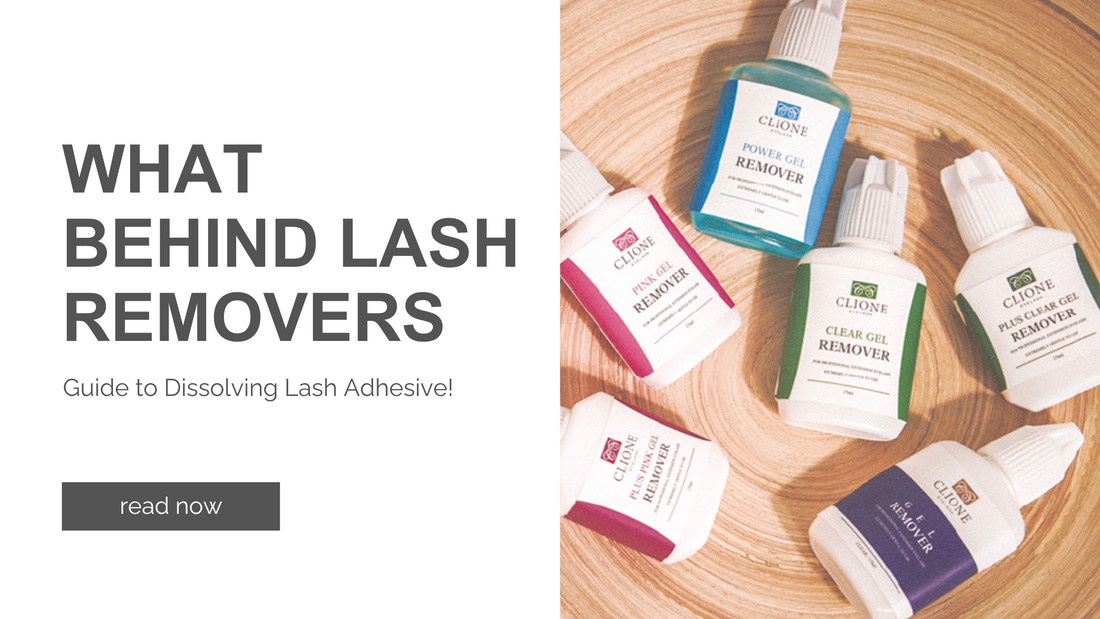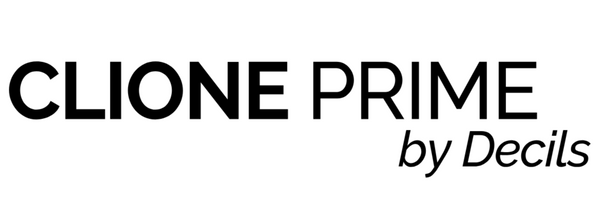
What Behind Lash Removers? Guide to Dissolving Lash Adhesive!
Lash removers are special solvents designed to dissolve the adhesive used to attach false eyelashes. They allow for the safe, effective, and gentle removal of false lashes without pulling or tugging on the delicate eyelid skin.
False eyelash adhesives are strong and durable enough to hold lashes in place all day or night. But this strength also makes them challenging to remove. Simply pulling lashes off can rip out natural eyelashes or cause irritation.
Lash removers provide a chemical solution to break down the adhesive bonds. When the adhesive dissolves, the lashes slide off easily and painlessly. Using a proper remover prevents damage to natural lashes and skin.
Adhesive Bindings
A strong, flexible adhesive forms a temporary bond between the false lash strip and the natural lash line when applying false lashes. Designed to stick firmly when applied, the adhesive also allows for safe, non-damaging removal when desired.
Cyanoacrylate, also referred to as "super glue," is the most commonly used adhesive type. This adhesive cures rapidly when pressed between the lash strip and natural lash, forming strong local bonds with the materials it touches. The cyanoacrylate adhesive is flexible when cured, moving with the natural blink motion. It also only adheres to the contact area between the strip and lash line, so it won't stick to other parts of the eye area or face.
LASH REMOVER
Oil-Based Removers
Oil-based removers work by using oils as the main active ingredient to dissolve the adhesive bonding of false eyelashes. The oils can break down the glue, allowing the lashes to gently slide off the natural lash line.
Common oils used in oil-based removers include mineral oil, castor oil, olive oil, coconut oil, and almond oil. These oils are known for their emollient properties and ability to penetrate and dissolve adhesive bonds. The oils soften and liquefy the dried glue, so that it no longer adheres the false lashes to the natural lashes. This allows for a gentle removal without pulling or tugging.
Acetone-Based Removers
Acetone-based removers use acetone as the primary active ingredient to break down the adhesive bonds. Acetone is a powerful solvent that can quickly penetrate and dissolve many types of adhesives.
When applied to the lash line, acetone starts dissolving the cyanoacrylate or formaldehyde-based glues that hold the artificial lashes in place. It breaks down the adhesive polymers into smaller molecules that are detached from the bonding surface. This allows the artificial lashes to be gently peeled off without pulling on the natural lashes.
The fast-acting solvent properties of acetone make it highly effective at removing even the strongest lash adhesives quickly. Typically only a few minutes of soaking a cotton swab in acetone-based remover and pressing it against the lash band is needed to dissolve the bonds.
Other Key Ingredients
Lash removers often contain other ingredients beyond the active solvents like oils and acetone. These additional ingredients serve important purposes:
- Aloe vera - This soothing plant extract helps prevent irritation and redness during the removal process. It provides a cooling and calming effect.
- Vitamin E - This antioxidant vitamin supports skin health and regeneration. It helps nourish and rejuvenate the eye area after adhesive removal.
- Glycerin - This humectant draws moisture into the skin. It keeps the eye area hydrated and comfortable during the removal process.
- Tea tree oil - This natural antiseptic helps prevent infection and inflammation. It also aids in gently dissolving adhesive.
- Chamomile extract - This anti-inflammatory botanical calms and comforts delicate eye skin. It also provides antioxidant protection.
- Cucumber extract - This soothing and cooling extract helps reduce puffiness and refresh tired eyes after lash extension removal. It's calming and hydrating.
- Green tea extract - This contains antioxidants that protect skin from free radical damage. It also has an anti-inflammatory effect to reduce redness and swelling.
The careful blend of these ingredients allows lash removers to effectively and gently dissolve adhesive while also caring for the delicate skin of the skin of the eye area. This helps prevent dryness, irritation, redness, and other unwanted side effects.
LASH REMOVER
Using Removers
When using lash removers, it's important to be gentle and avoid getting the product into your eyes. For proper use, follow these tips:
- Always do a patch test first. Dab a small amount on your arm or behind your ear and wait 10 minutes to check for irritation before applying to lashes.
- Carefully brush or wipe remover along the lash line using a cotton swab or pad. Don't scrub hard.
- Wait 30-60 seconds for the remover to dissolve the adhesive before gently sliding lashes off. Don't pull.
- Use remover sparingly and avoid contact with eyes. Rinse eyes immediately if any gets in.
- Don't reuse cotton swabs or pads between eyes to prevent contamination. Use a fresh one for each eye.
- Rinse eyes thoroughly with cool water after use to remove any residue.
- Follow up with a gentle, oil-free eye makeup remover to get any remaining residue off skin.
- Discontinue use if you experience burning, stinging, redness or irritation.
- Always keep remover tightly closed and store out of reach of children.
To effectively remove false lashes while minimizing irritation to the delicate eye area, follow proper usage instructions. Test first, use gentle motions, limit eye contact, and rinse thoroughly after use.
Homemade Alternatives
Many people choose to make their own lash adhesive removers at home using natural ingredients. One popular option is coconut oil. Pure coconut oil is an emollient, meaning it can help soften the adhesive bond. To use it, apply a small amount of coconut oil to a cotton pad or cotton swab and gently hold it against the lash line for 30–60 seconds. This gives the oil time to penetrate and loosen the glue. After letting it soak, very gently wipe the oil and adhesive away from the lash line. Be careful not to tug too hard.
Pros and Cons
Oil-based removers
Pros:
- Gentle and nourishing for natural lashes
- No harsh chemicals
- Often reusable
Cons:
- Can take more time and effort to fully remove adhesive
- Oil residues can interfere with reapplication
Acetone-based removers
Pros:
- Quickly and easily dissolve adhesive
- One-step removal process
- Low cost
Cons:
- Can be drying or damaging to natural lashes over time
- Strong chemical odor
- Not reusable
Soak vs wipe
Soak removers:
Pros:
- Thorough adhesive removal
- Minimal tugging at lashes
Cons:
- Take more time
- Can irritate eyes
Wipe removers:
Pros:
- Fast and convenient
- Lower risk of eye irritation
Cons:
- May not fully dissolve adhesive
- Can cause lash breakage from tugging
Overall, oil-based removers provide the gentlest option for natural lashes, while acetone-based removers offer speed and efficiency. Soak removers are ideal for a spa experience, while wipes are great for on-the-go removal. When selecting a remover, consider your unique needs and lash goals.
Key takeaways
Lash removers are an important product for safely and effectively removing false eyelash extensions. They work by dissolving the adhesive bindings that adhere the false lashes to natural lashes. The main types of removers use either oil-based or acetone-based solutions. Oil-based removers are gentler but take longer to work, while acetone-based formulas work quickly but can be harsher.
LASH REMOVER
